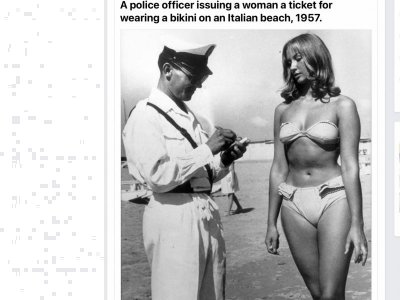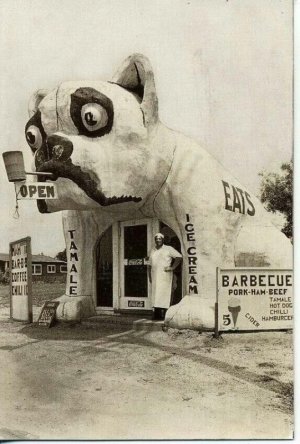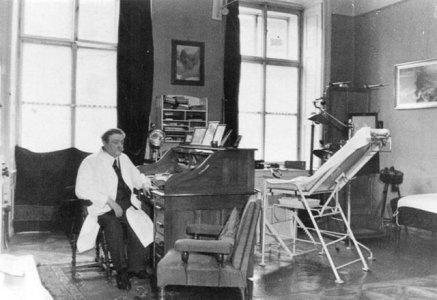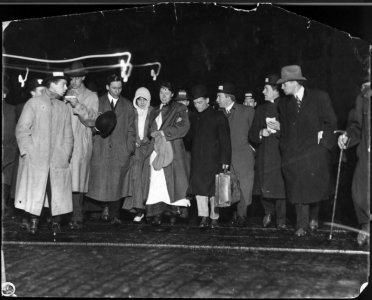Is it wheelchair accessible?Well, judging by the grade of it, one slip and you're a goner.
You are using an out of date browser. It may not display this or other websites correctly.
You should upgrade or use an alternative browser.
You should upgrade or use an alternative browser.
History, anything goes, including pictures
- Thread starter mellowyellow
- Start date
Only if you have a craneIs it wheelchair accessible?



Pappy
Living the Dream
AnnieA
Well-known Member
- Location
- Down South

She died of tuberculosis in 1861 which was the illness that incapacitated her husband on the voyage.
.
AnnieA
Well-known Member
- Location
- Down South
His expression doesn't look like he's hating his job at that moment...
mellowyellow
Well-known Member
I never knew about this, the things you learn digging around in history. 
On this day, 17 April 1962 1,400 Cuban exiles land in Bay of Pigs in a doomed attempt to overthrow Fidel Castro
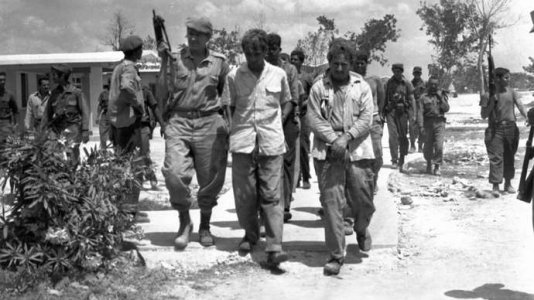
U.S.-backed Cuban exiles captured during the failed Bay of Pigs invasion, Cuba, 1961.
The Bay of Pigs Invasion was a failed attack on the southwestern coast of Cuba in April 1961 by CIA-led Cuban exiles who opposed Fidel Castro's Cuban Revolution.
Early in 1960, President Dwight D Eisenhower authorized the CIA to recruit Cuban exiles living in Miami and train them for an invasion of Cuba. The group that became known as Brigade 2506 was initially 28 members, including 10 former Cuban military officers recruited by Dr. Manuel Artime, head of the Movimiento de Recuperación Revolucionaria (MRR)……………..
https://www.history.com/news/5-things-you-might-not-know-about-the-bay-of-pigs-invasion
On this day, 17 April 1962 1,400 Cuban exiles land in Bay of Pigs in a doomed attempt to overthrow Fidel Castro

U.S.-backed Cuban exiles captured during the failed Bay of Pigs invasion, Cuba, 1961.
The Bay of Pigs Invasion was a failed attack on the southwestern coast of Cuba in April 1961 by CIA-led Cuban exiles who opposed Fidel Castro's Cuban Revolution.
Early in 1960, President Dwight D Eisenhower authorized the CIA to recruit Cuban exiles living in Miami and train them for an invasion of Cuba. The group that became known as Brigade 2506 was initially 28 members, including 10 former Cuban military officers recruited by Dr. Manuel Artime, head of the Movimiento de Recuperación Revolucionaria (MRR)……………..
https://www.history.com/news/5-things-you-might-not-know-about-the-bay-of-pigs-invasion
RnR
Member
- Location
- Gold Coast, Queensland
That is absolutely terrifying to me, stunning photo though, thanks Pappy.Saint Helena, one of the longest straight staircases in the world. My lord, I’d never make it, up or down.
View attachment 160059
RnR
Member
- Location
- Gold Coast, Queensland
RnR
Member
- Location
- Gold Coast, Queensland
Louis Réard with his bikini. Micheline Bernardini modelling the first bikini on 5 July 1946 at the Piscine Molitor in Paris.

Although two-piece bathing suits were being used by women as early as the 1930s, the bikini is commonly dated to 5 July 1946 when, partly due to material rationing after World War II, French engineer Louis Réard introduced the modern bikini, modelled by Micheline Bernardini. Réard named his design for the Bikini Atoll, where the first post-war tests of the atomic bomb were taking place. He opened a bikini shop and ran it for the next 40 years.
RnR
Member
- Location
- Gold Coast, Queensland
Cuban leader Fidel Castro, lower right, sits inside a tank near Playa Giron, Cuba, during the Bay of Pigs invasion, 17 April 1961.I never knew about this, the things you learn digging around in history.
On this day, 17 April 1962 1,400 Cuban exiles land in Bay of Pigs in a doomed attempt to overthrow Fidel Castro
View attachment 160132
U.S.-backed Cuban exiles captured during the failed Bay of Pigs invasion, Cuba, 1961.
The Bay of Pigs Invasion was a failed attack on the southwestern coast of Cuba in April 1961 by CIA-led Cuban exiles who opposed Fidel Castro's Cuban Revolution.
Early in 1960, President Dwight D Eisenhower authorized the CIA to recruit Cuban exiles living in Miami and train them for an invasion of Cuba. The group that became known as Brigade 2506 was initially 28 members, including 10 former Cuban military officers recruited by Dr. Manuel Artime, head of the Movimiento de Recuperación Revolucionaria (MRR)……………..
https://www.history.com/news/5-things-you-might-not-know-about-the-bay-of-pigs-invasion

RnR
Member
- Location
- Gold Coast, Queensland
17 April 1397 – Geoffrey Chaucer tells The Canterbury Tales for the first time at the court of Richard II. Chaucer scholars have also identified this date as the start of the book's pilgrimage to Canterbury.
The Canterbury Tales is a collection of 24 stories that runs to over 17,000 lines written in Middle English. In 1386, Chaucer became Controller of Customs and Justice of Peace and, in 1389, Clerk of the King's work. It was during these years that he began working on his most famous text. Mostly written in verse, although some are in prose, the tales are presented as part of a story-telling contest by a group of pilgrims as they travel together on a journey from London to Canterbury.
Chaucer as a Pilgrim from the Ellesmere manuscript. Commemorative plaque, Chaucer’s verse.

Even the oldest surviving manuscripts of the Tales are not Chaucer's originals. The first version of The Canterbury Tales to be published in print was William Caxton's 1476 edition. Only 10 copies of this edition are known to exist.
It has been suggested that the greatest contribution of The Canterbury Tales to English literature was the popularisation of the English vernacular in mainstream literature.
The Canterbury Tales is a collection of 24 stories that runs to over 17,000 lines written in Middle English. In 1386, Chaucer became Controller of Customs and Justice of Peace and, in 1389, Clerk of the King's work. It was during these years that he began working on his most famous text. Mostly written in verse, although some are in prose, the tales are presented as part of a story-telling contest by a group of pilgrims as they travel together on a journey from London to Canterbury.
Chaucer as a Pilgrim from the Ellesmere manuscript. Commemorative plaque, Chaucer’s verse.

Even the oldest surviving manuscripts of the Tales are not Chaucer's originals. The first version of The Canterbury Tales to be published in print was William Caxton's 1476 edition. Only 10 copies of this edition are known to exist.
It has been suggested that the greatest contribution of The Canterbury Tales to English literature was the popularisation of the English vernacular in mainstream literature.
RnR
Member
- Location
- Gold Coast, Queensland
17 April 1907 – The Ellis Island immigration centre in the United States processes 11,747 people, more than on any other day.
Ellis Island, in Upper New York Bay, was the gateway for over 12 million immigrants to the US as the United States' busiest immigrant inspection station for over 60 years from 1892 until 1954. The peak year for immigration at Ellis Island was 1907, with 1,004,756 immigrants processed. The all-time daily high occurred on 17 April 1907, when 11,747 immigrants arrived.

Ellis Island, in Upper New York Bay, was the gateway for over 12 million immigrants to the US as the United States' busiest immigrant inspection station for over 60 years from 1892 until 1954. The peak year for immigration at Ellis Island was 1907, with 1,004,756 immigrants processed. The all-time daily high occurred on 17 April 1907, when 11,747 immigrants arrived.

Pappy
Living the Dream
RnR
Member
- Location
- Gold Coast, Queensland
18 April 1506 – The cornerstone of the current St. Peter's Basilica is laid.
The Papal Basilica of St. Peter in the Vatican, or simply St. Peter's Basilica, is an Italian Renaissance church in Vatican City, the papal enclave within the city of Rome. Designed principally by Donato Bramante, Michelangelo, Carlo Maderno and Gian Lorenzo Bernini, St. Peter's is the most renowned work of Renaissance architecture and the largest church in the world.
St. Peter's Basilica and details of the dome.

St. Peter's Baldacchino, the high altar intended to mark in a monumental way, the place of Saint Peter's tomb underneath. Sculptor Gian Lorenzo Bernini was only 25 years old when Pope Urban VIII commissioned him to fashion the high altar.

The St. Peter’s "baldacchino", a pavilion-like structure which is 30 metres tall, considered to be the biggest bronze structure in the world. The draped canopy is of bronze, and all the details, including the olive leaves, bees representing Pope Urban’s Barberini family, and the portrait heads of Urban's niece in childbirth and her newborn son, are picked out in gold leaf.

While it is neither the mother church of the Catholic Church nor the cathedral of the Diocese of Rome, St. Peter's is regarded as one of the holiest Catholic shrines. It has been described as "holding a unique position in the Christian world" and as "the greatest of all churches of Christendom".
The Papal Basilica of St. Peter in the Vatican, or simply St. Peter's Basilica, is an Italian Renaissance church in Vatican City, the papal enclave within the city of Rome. Designed principally by Donato Bramante, Michelangelo, Carlo Maderno and Gian Lorenzo Bernini, St. Peter's is the most renowned work of Renaissance architecture and the largest church in the world.
St. Peter's Basilica and details of the dome.

St. Peter's Baldacchino, the high altar intended to mark in a monumental way, the place of Saint Peter's tomb underneath. Sculptor Gian Lorenzo Bernini was only 25 years old when Pope Urban VIII commissioned him to fashion the high altar.

The St. Peter’s "baldacchino", a pavilion-like structure which is 30 metres tall, considered to be the biggest bronze structure in the world. The draped canopy is of bronze, and all the details, including the olive leaves, bees representing Pope Urban’s Barberini family, and the portrait heads of Urban's niece in childbirth and her newborn son, are picked out in gold leaf.

While it is neither the mother church of the Catholic Church nor the cathedral of the Diocese of Rome, St. Peter's is regarded as one of the holiest Catholic shrines. It has been described as "holding a unique position in the Christian world" and as "the greatest of all churches of Christendom".
RnR
Member
- Location
- Gold Coast, Queensland
18 April 1906 – An earthquake and fire destroy much of San Francisco, California.
The 1906 San Francisco earthquake struck the coast of Northern California at 5:12 a.m. on April 18 with an estimated moment magnitude of 7.9 and a maximum Mercalli intensity of XI, Extreme. High intensity shaking was felt from Eureka on the North Coast to the Salinas Valley, an agricultural region to the south of the San Francisco Bay Area.
“Looking Down Sacramento Street, San Francisco, April 18, 1906” is a black and white photograph taken by Arnold Genthe in San Francisco, California on the morning of 18 April 1906 in the wake of the 1906 San Francisco earthquake. Library of Congress. It became the most famous photo of the destruction of San Francisco. Arnold Genthe, with his cameras and studio destroyed, borrowed a hand-held camera and photographed the destruction across the city.

Devastating fires soon broke out in the city and lasted for several days. As a result, up to 3,000 people died and over 80% of the city of San Francisco was destroyed. The events are remembered as one of the worst and deadliest earthquakes in the history of the United States. The death toll remains the greatest loss of life from a natural disaster in California's history and high in the lists of American urban disasters.
The 1906 San Francisco earthquake struck the coast of Northern California at 5:12 a.m. on April 18 with an estimated moment magnitude of 7.9 and a maximum Mercalli intensity of XI, Extreme. High intensity shaking was felt from Eureka on the North Coast to the Salinas Valley, an agricultural region to the south of the San Francisco Bay Area.
“Looking Down Sacramento Street, San Francisco, April 18, 1906” is a black and white photograph taken by Arnold Genthe in San Francisco, California on the morning of 18 April 1906 in the wake of the 1906 San Francisco earthquake. Library of Congress. It became the most famous photo of the destruction of San Francisco. Arnold Genthe, with his cameras and studio destroyed, borrowed a hand-held camera and photographed the destruction across the city.

Devastating fires soon broke out in the city and lasted for several days. As a result, up to 3,000 people died and over 80% of the city of San Francisco was destroyed. The events are remembered as one of the worst and deadliest earthquakes in the history of the United States. The death toll remains the greatest loss of life from a natural disaster in California's history and high in the lists of American urban disasters.
This was the first sight of the USA for most Swedish immigrantsr17 April 1907 – The Ellis Island immigration centre in the United States processes 11,747 people, more than on any other day.
Ellis Island, in Upper New York Bay, was the gateway for over 12 million immigrants to the US as the United States' busiest immigrant inspection station for over 60 years from 1892 until 1954. The peak year for immigration at Ellis Island was 1907, with 1,004,756 immigrants processed. The all-time daily high occurred on 17 April 1907, when 11,747 immigrants arrived.

Pappy
Living the Dream
Until 1920, children could be mailed through the US Postal service. They had to be under fifty pounds, and stamps were affixed to their clothes. It was cheaper for many people to ship children than to put them on a train, and the children rode on a train (in the mail car) anyway---being watched and fed by mail clerks. The record distance? Over 700 miles from Florida to Virginia for a mere 15 cents in stamps. It really was a simpler time.
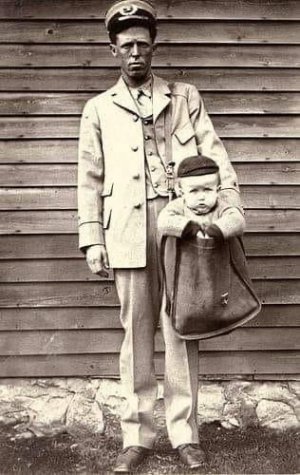

mellowyellow
Well-known Member
Sinn Fein president Mary Lou McDonald ‘sorry’ over Lord Mountbatten’s murder

Prince Charles, with Lord Mountbatten and the Duke of Edinburgh in 1977, said his anguish over the death of his mentor helped him to understand the pain caused by the conflict
The president of Sinn Fein has said sorry over the murder of Lord Mountbatten at the hands of the IRA, the first such explicit apology from a leader of the party for the assassination.
Mary Lou McDonald apologised for the “heart breaking” death of the Duke of Edinburgh’s uncle in 1979.

Lord Mountbatten, who was a mentor to Prince Philip and Prince Charles, was murdered when the IRA blew up his fishing boat in the village of Mullaghmore in Co Sligo. He had been holidaying in his summer home of Classiebawn Castle.
McDonald’s comments are a departure from her predecessor Gerry Adams, who expressed regret in the past but insisted that Lord Mountbatten “knew the dangers” of visiting Ireland.

Prince Charles, with Lord Mountbatten and the Duke of Edinburgh in 1977, said his anguish over the death of his mentor helped him to understand the pain caused by the conflict
The president of Sinn Fein has said sorry over the murder of Lord Mountbatten at the hands of the IRA, the first such explicit apology from a leader of the party for the assassination.
Mary Lou McDonald apologised for the “heart breaking” death of the Duke of Edinburgh’s uncle in 1979.

Lord Mountbatten, who was a mentor to Prince Philip and Prince Charles, was murdered when the IRA blew up his fishing boat in the village of Mullaghmore in Co Sligo. He had been holidaying in his summer home of Classiebawn Castle.
McDonald’s comments are a departure from her predecessor Gerry Adams, who expressed regret in the past but insisted that Lord Mountbatten “knew the dangers” of visiting Ireland.
RnR
Member
- Location
- Gold Coast, Queensland
On 27 August 1979, Lord Mountbatten went lobster-potting and tuna fishing in his 30-foot wooden boat, Shadow V, which had been moored in the harbour at Mullaghmore, a small seaside village and the location of his summer home, Classiebawn Castle. Provisional Irish Republican Army member Thomas McMahon had slipped onto the unguarded boat during the night and attached a radio-controlled bomb weighing 50 pounds. When Mountbatten and his party were aboard, just a few hundred yards from the shore, the bomb was detonated by the IRA’s South Armagh brigade.Sinn Fein president Mary Lou McDonald ‘sorry’ over Lord Mountbatten’s murder
View attachment 160431
Prince Charles, with Lord Mountbatten and the Duke of Edinburgh in 1977, said his anguish over the death of his mentor helped him to understand the pain caused by the conflict
The president of Sinn Fein has said sorry over the murder of Lord Mountbatten at the hands of the IRA, the first such explicit apology from a leader of the party for the assassination.
Mary Lou McDonald apologised for the “heart breaking” death of the Duke of Edinburgh’s uncle in 1979.
View attachment 160432
Lord Mountbatten, who was a mentor to Prince Philip and Prince Charles, was murdered when the IRA blew up his fishing boat in the village of Mullaghmore in Co Sligo. He had been holidaying in his summer home of Classiebawn Castle.
McDonald’s comments are a departure from her predecessor Gerry Adams, who expressed regret in the past but insisted that Lord Mountbatten “knew the dangers” of visiting Ireland.
Lord Mountbatten pictured sailing aboard the Shadow V on Mullaghmore Harbour.

The boat was destroyed by the force of the blast, and Mountbatten's legs were almost blown off. Mountbatten, then aged 79, was pulled alive from the water by nearby fishermen, but died from his injuries before being brought to shore. Also aboard the boat were his elder daughter Lady Patricia Brabourne, her husband Lord John Brabourne, their twin sons Nicholas and Timothy Knatchbull, John's mother Doreen, dowager Lady Brabourne, and Paul Maxwell, a young crew member from County Fermanagh. Nicholas 14 and Paul 15 were killed by the blast and the others were seriously injured. Doreen, Lady Brabourne, aged 83, died from her injuries the following day.
mellowyellow
Well-known Member
mellowyellow
Well-known Member
RnR
Member
- Location
- Gold Coast, Queensland
Never knew this ... weird ... bringing to mind the question ... how does Eduard Bloch's protection fit in with Hitler's persecution of other Jews???Eduard Bloch, the Hitler family's Jewish physician, in his office (circa 1938). Hitler later referred to Bloch as a "Noble Jew," and he remained under his personal protection. He left Austria for the US in 1940.
View attachment 160443
RnR
Member
- Location
- Gold Coast, Queensland
Very lucky ... over 1,500 people died in the maritime disaster, while 705 individuals survived.View attachment 160448
Survivors of the sinking of the RMS Titanic are interviewed by reporters as they come off the RMS Carpathia in New York on April 18, 1912.
RnR
Member
- Location
- Gold Coast, Queensland
19 April 1506 – The Lisbon Massacre begins, in which accused Jews are being slaughtered by Portuguese Catholics.
In the years that followed the 1492 banishment of the Jews from Castile and Aragon by Catholic Monarchs, about 93,000 Jews had taken refuge in neighbouring Portugal. In 1497, during the reign of King Manuel I of Portugal, the Jews had been forced to convert to Roman Catholicism. The Lisbon massacre was an incident in April 1506 where a crowd of Catholics, as well as foreign sailors who were anchored in the Tagus, persecuted, tortured, killed, and burnt at the stake hundreds of people who were accused of being Jews and thus, guilty of deicide and heresy.
A depiction of the Lisbon massacre on Sunday, 19 April 1506. Monument in Lisbon in memory of those lost. It reads: "In memory of the thousands of Jews who were victimed by intolerance and religious fanaticism, killed on the massacre that started on 19 April 1506, on this square".

Some Portuguese were arrested and hanged, while others had all their possessions confiscated by the Crown. The foreigners returned to their ships with their plunder and sailed away.
In the years that followed the 1492 banishment of the Jews from Castile and Aragon by Catholic Monarchs, about 93,000 Jews had taken refuge in neighbouring Portugal. In 1497, during the reign of King Manuel I of Portugal, the Jews had been forced to convert to Roman Catholicism. The Lisbon massacre was an incident in April 1506 where a crowd of Catholics, as well as foreign sailors who were anchored in the Tagus, persecuted, tortured, killed, and burnt at the stake hundreds of people who were accused of being Jews and thus, guilty of deicide and heresy.
A depiction of the Lisbon massacre on Sunday, 19 April 1506. Monument in Lisbon in memory of those lost. It reads: "In memory of the thousands of Jews who were victimed by intolerance and religious fanaticism, killed on the massacre that started on 19 April 1506, on this square".

Some Portuguese were arrested and hanged, while others had all their possessions confiscated by the Crown. The foreigners returned to their ships with their plunder and sailed away.
RnR
Member
- Location
- Gold Coast, Queensland
19 April 1770 – Captain James Cook and the crew of HMS Endeavour first sight the Eastern coast of Australia.
In 1766, the Admiralty engaged Cook to command a scientific voyage to the Pacific Ocean. The purpose of the voyage was to observe and record the transit of Venus across the Sun for the benefit of a Royal Society inquiry into a means of determining longitude. Cook, at the age of 39, was promoted to lieutenant to grant him sufficient status to take the command. The expedition sailed aboard HMS Endeavour, departing England on 26 August 1768. Cook and his crew rounded Cape Horn and continued westward across the Pacific to arrive at Tahiti on 13 April 1769, where the observations of the Venus Transit were made.

Once the observations were completed, Cook opened the sealed orders which were additional instructions from the Admiralty for the second part of his voyage: to search the south Pacific for signs of the postulated rich southern continent of Terra Australis. Cook then sailed to New Zealand and mapped the complete coastline.

Cook then voyaged west. On 19 April 1770, officer of the watch, Lieutenant Zachary Hicks, sighted land and alerted Cook. Cook made out low sand hills which he named Point Hicks, although he did not yet know whether they formed part of an island or a continent. Thus Cook's expedition became the first recorded Europeans to have encountered the eastern coastline of Australia.
In 1766, the Admiralty engaged Cook to command a scientific voyage to the Pacific Ocean. The purpose of the voyage was to observe and record the transit of Venus across the Sun for the benefit of a Royal Society inquiry into a means of determining longitude. Cook, at the age of 39, was promoted to lieutenant to grant him sufficient status to take the command. The expedition sailed aboard HMS Endeavour, departing England on 26 August 1768. Cook and his crew rounded Cape Horn and continued westward across the Pacific to arrive at Tahiti on 13 April 1769, where the observations of the Venus Transit were made.

Once the observations were completed, Cook opened the sealed orders which were additional instructions from the Admiralty for the second part of his voyage: to search the south Pacific for signs of the postulated rich southern continent of Terra Australis. Cook then sailed to New Zealand and mapped the complete coastline.

Cook then voyaged west. On 19 April 1770, officer of the watch, Lieutenant Zachary Hicks, sighted land and alerted Cook. Cook made out low sand hills which he named Point Hicks, although he did not yet know whether they formed part of an island or a continent. Thus Cook's expedition became the first recorded Europeans to have encountered the eastern coastline of Australia.


